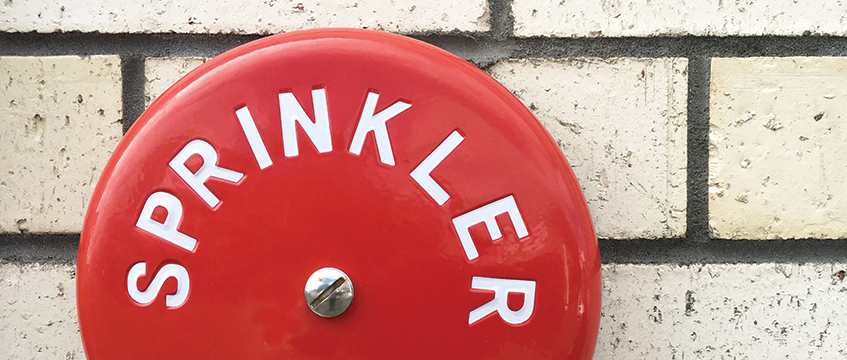As guidance on building safety and cladding evolves, Alison Murrin offers suggestions for advisers on the questions to ask in relation to EWS1 forms, when acting on an acquisition or refinancing of a building.
The RICS developed the External Wall System 1 Form with a view to standardising the process of reporting and valuation of multi-occupied residential buildings (such as blocks of flats). The form deals with the fire safety of the external wall system and must be completed by a “qualified professional”. Where combustible materials are identified in the external wall then the EWS1 will indicate the level of fire risk and whether any remedial works are necessary. Once completed, the EWS1 is valid for five years.
The EWS1 is not a statutory requirement. Its purpose is to ensure that a prudent valuation can be provided for a mortgage or remortgage on a property which features an external wall cladding system. It is not designed to assess other fire safety features or risks.
The guidance and its application
Although the EWS1 was originally introduced to deal with buildings over 18 metres high, the government published a consolidated advice note in January 2020 which stated that it was necessary to “assess and manage the risk of external fire spread for buildings of any height”.
As a result, lenders and valuers began routinely requiring an EWS1 as a standard mortgage condition. Inevitably this led to increasing numbers of flat owners finding it difficult to sell or remortgage their homes because of disagreements about whether an EWS1 was needed, or because of delays in obtaining an EWS1 due to the scarcity of qualified assessors.
To address this ongoing problem, the government, the RICS and lenders reached an agreement in November 2020 which confirmed an EWS1 is not required for any residential building without cladding, regardless of height. After this agreement the RICS issued a new guidance note – Valuation of properties in multi-storey, multi-occupancy residential buildings with cladding – which took effect from 5 April, covering the valuation of properties in multi-storey, multi-occupied residential buildings with cladding.
Most recently, on 21 July 2021, the government issued a statement – Major intervention from government and lenders to support leaseholders – suggesting that EWS1 forms should not be required for buildings under 18 metres. This latest announcement by housing secretary Robert Jenrick follows new advice that the government commissioned from fire safety experts, which concludes that there is no systemic risk of fire in medium and lower-rise buildings. Further details can be found in the written statement to parliament – Proportionality in building safety – and the Independent expert statement in building safety in medium and lower-rise blocks of flats.
In light of this announcement, it is likely that the government will withdraw its January 2020 consolidated advice note. However, it is understood that the RICS has advised its members to continue to follow current RICS guidance until it has more clarity on the government’s statement and underlying research and can assess what impact they may have.
Going forward, it would be easy to conclude that an EWS1 will only be relevant to the valuation of a building in scope over 18 metres. However, it is quite possible that some building owners will have already obtained an EWS1 for medium and lower-rise buildings on the basis of the guidance before the government announcement in July this year. If this is the case, then it appears that valuers will not be able to ignore the EWS1, despite the fact that the latest advice suggests an EWS1 is not required for buildings under 18 metres.
Should the EWS1 recommend remediation works, then it is likely that these works will still have to be done. Even if the EWS1 does not recommend any remediation works, it is important to bear in mind that this could change at any point following a re-assessment of the building. Furthermore, although currently an EWS1 is valid for five years, it is possible that the validity period may be reduced in the future.
Suggestions for advisers
Lawyers cannot advise on the physical condition of the building or in relation to fire safety issues. A surveyor is best placed to advise on these issues, and whether an EWS1 is necessary. However, lawyers are able to pass on information received from the building owner or managing agents in response to any pre-contract enquiries raised in relation to fire safety.
So, lawyers acting for buyers and/or lenders on an acquisition or refinancing of a building (which has any residential multi-occupancy element) can ask the owner whether a valid EWS1 already exists for the building and request a copy of the EWS1 (together with the fire risk assessment).
Where no EWS1 exists, it would be advisable to instruct a surveyor to confirm whether an EWS1 is required in view of the current mismatch between the government’s latest announcement and the current official guidance.
The Law Society has also released a very useful guidance note – Building safety for flat buyers – on building safety issues for those purchasing flats. The guidance should also assist those advising clients acquiring an interest in a multi-occupied residential building.
Ultimately, the Fire Safety Act 2021 (which achieved Royal Assent in April 2021) will require cladding checks as part of the fire risk assessment. The Act closes the gap left by the Regulatory Reform (Fire Safety) Order 2005 by extending the scope of the Order to include the structure and external walls of the building and fire doors to individual flats as part the fire risk assessment of the building.
However, until all relevant buildings have updated fire risk assessments, buyers, lenders and valuers are still going to rely on the EWS1 form.
Alison Murrin is an expertise counsel at Ashurst LLP









